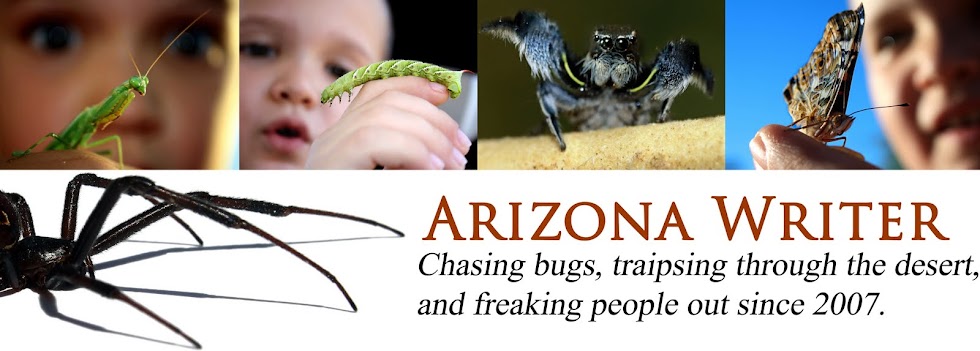This is an expanded version of this month's column in Times Publications.
This month, my son and I went back in time billions of years. Then we went on a few archeological expeditions, took a trip to a modern photo gallery, and finally, I put him in jail.
 |
| Standard punishment for bothering Mom while she's working. |
We went, of course, to the Arizona Museum of Natural History. During a visit there, you and your family can learn about anthropology, archaeology, history, Native American civilizations, and many fields of scientific research. Of course, we really went for the dinosaurs. It’s known as the “dinosaur museum,” after all.
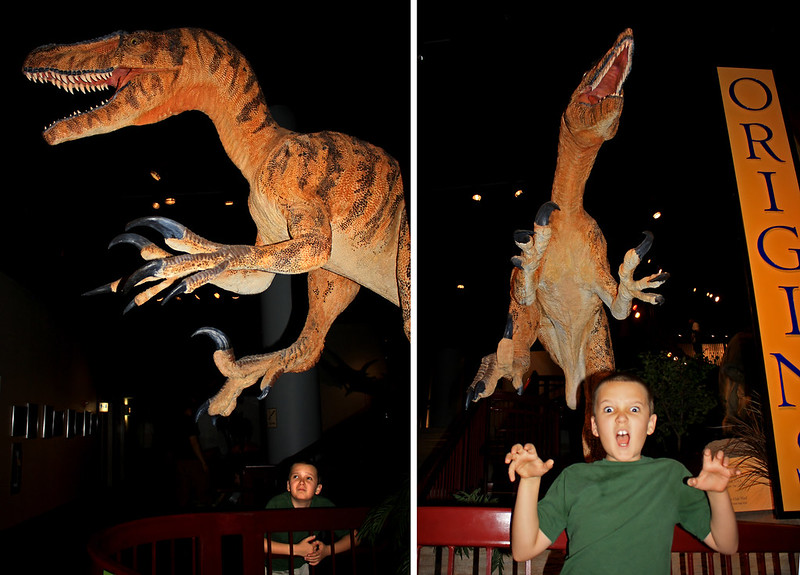 |
| And also the "Play acting beneath big-ass dinosaur claws" museum. What; that's not what you call it? |
Some of my and my son’s favorites, however, weren’t the showstoppers like the towering camarasaurus, fearsome tyrannosaurus, or iconic triceratops (although, yes, those warranted several visits). We loved finding something new, something we didn’t know about before. The crazy, horned skull of a “crowned crocodile” that was actually part of a group of mammal-like reptiles that lived around 267 million years ago. The spiny, intricately detailed trilobite fossils, part of a group including over 10,000 species. There are dinosaur juveniles -- and nests! If all you want is to marvel at some giants, they’ve got you covered, but there is much more to paleontology, and the museum covers that, too.
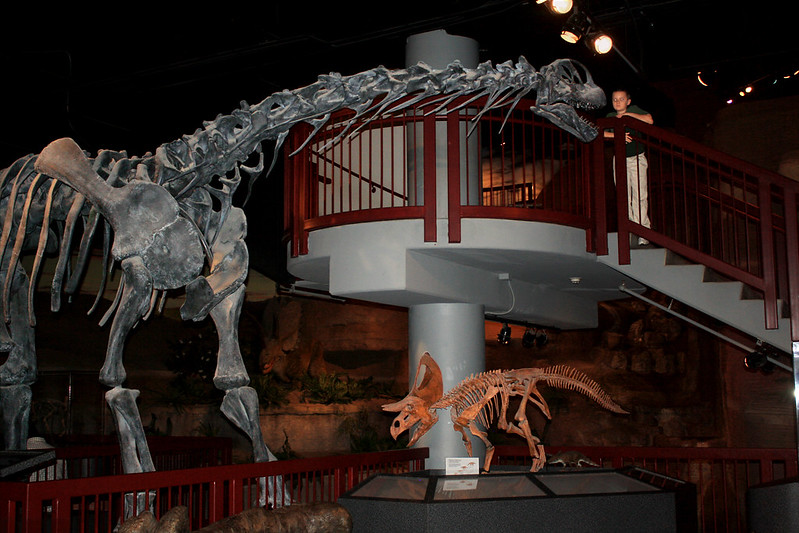 |
| But seriously, the giants are pretty cool. |
 |
| Also, more giant claws! |
We were also captivated by “Origins,” a permanent exhibit that showcases astronomical events through images and displays and teaches visitors how to “look into the past” simply by examining the stars around them. From the formation of the moon 4.5 billion years ago, to life on Earth 370 million years in the past, to meteorites and minerals collected by people around Arizona, this gallery’s got the history of our world. My son (and each passing kid) gazed in wonder from the hole in the bizarrely shaped giant cast of the Tucson Meteorite, an immense iron meteorite that was discovered before 1850. Beside it, visitors are encouraged to touch a real meteorite, older than the solar system itself.
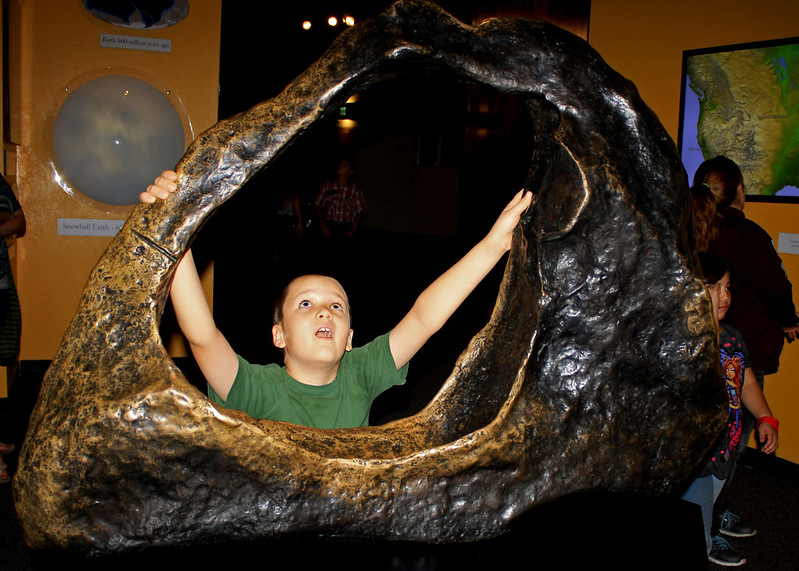 |
| The real one was actually used as an anvil before they knew what they had. For my money, unabashed wonder is a better use. |
Happily, our visit coincided with the museum’s “Rulers of the Prehistoric Skies” exhibit, which is set to run through early 2013. This was lucky, because I have always -- oops; I mean my son has always -- dreamed of seeing pterosaurs (which are reptiles, but not dinosaurs) in person. This is about as close as you’ll get, so we were both thrilled. At the exhibit, we learned about everything from pterosaur anatomy and evolution to their dietary habits. There were even replicas of baby pterosaurs. Of course, the highlight is probably standing beneath Quetzalcoatlus northropi. Imagine a small glider plane. Now make it a giant flying, beaked reptile, and you’ve got a good handle on Quetzalcoatlus. It was one of the biggest flying animals of all time, with a wing span of up to 10 meters and a skull that topped 2 meters. I managed to let David take the first turn beneath the behemoth, but just barely.
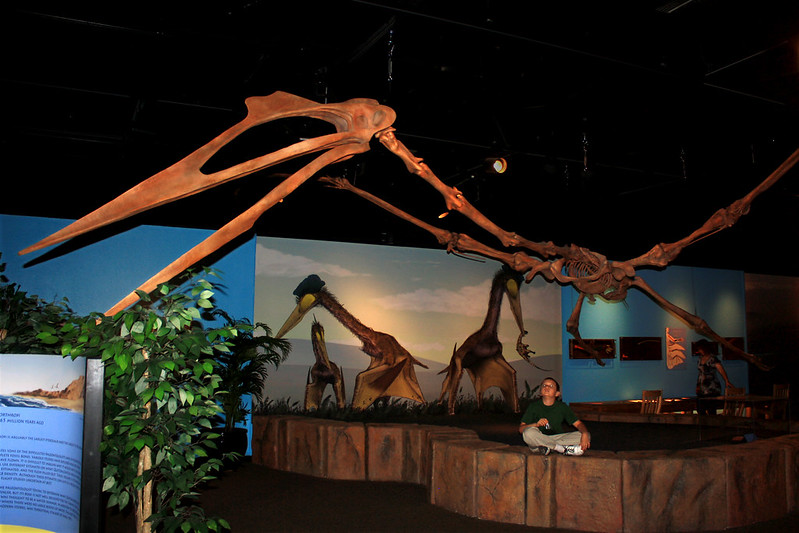 |
| Getting cool pictures only kind of makes up for it not being my turn yet. |
If quetzalcoatlus "folded" and stood on its haunches (if pterosaurs had haunches), it was about the size of a giraffe. A giraffe that could fly for thousands of miles, and had a beak much bigger than you.
 |
| Pteranodon sternbergi and Kiddus amazeface. Priceless. |
If top predators of sky and land aren't your speed, how about the sea? Prehistoric oceans were teeming with apex predators not topped in any blockbuster, and you can get your fill of sharks and marine reptiles here as well. The diorama of a six-gilled shark is always one of our favorites. And we love the pliosaur exhibit of the Black Mesa area of northeastern Arizona, circa 100 million years ago, which showcases short-necked but ridiculously large plesiosaurs, swimming reptiles that lived alongside dinosaurs in the Jurassic and Cretaceous Periods.
 |
| Shark and awe. |
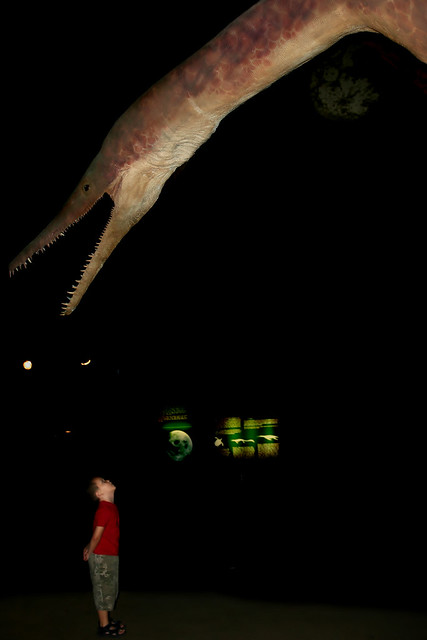 |
| We're gonna need a bigger boat. |
It wasn’t quite yet unveiled when we were there, but the museum is unwrapping a new exhibition just in time for Christmas -- “Destination Station,” open Dec. 20, 2012 through March 24, 2013. The exhibit focuses on the International Space Station, an internationally developed research facility, in Earth’s lower orbit. It's the largest space station ever constructed, and is a space-based research lab where astronauts from around the world conduct experiments. “Destination” is a sort of awareness campaign for the station, showcasing the cutting-edge research that takes place there, showing visitors how studies are conducted and what discoveries have been made, and highlighting its immense potential for future research. The museum plans to collaborate with the Arizona SciTech Festival, and may even call in visiting astronauts during the exhibit’s run.
 |
| Triceratops appreciation, or the only time this vegetarian really enjoys a good set of ribs. |
The exhibit should fit right in. One of the best things about the museum is that it encourages active participation, mentally and sometimes even physically. Plaques by the reconstructions and fossils not only identify the species, they tell how it was discovered. Some displays even tell about questions scientists still haven’t answered, which perfectly highlights the skeptical, ever-developing nature of science. If you went here as a kid, it won‘t be the same when you take your kids. If they take theirs in 20 years, it will be a whole new place again. This place not only shows the fruits of scientific discovery, it shows the process of discovery. You can crawl through a lava tube (if you’re a small- to medium-sized adult or a kid), touch several displays (signs will say “Please touch”), piece together skeleton puzzles, answer trivia questions, pan for gold (“fool’s gold,” anyway), and stay in a cell from a real territorial jail.
 |
| What? Forget something? Nope; just leaving the jail exhibit. |
And, come on. Your kids might whine when you leave places, but it’s not often you hear “Mooom! I want to go back to jail!”
More photos:
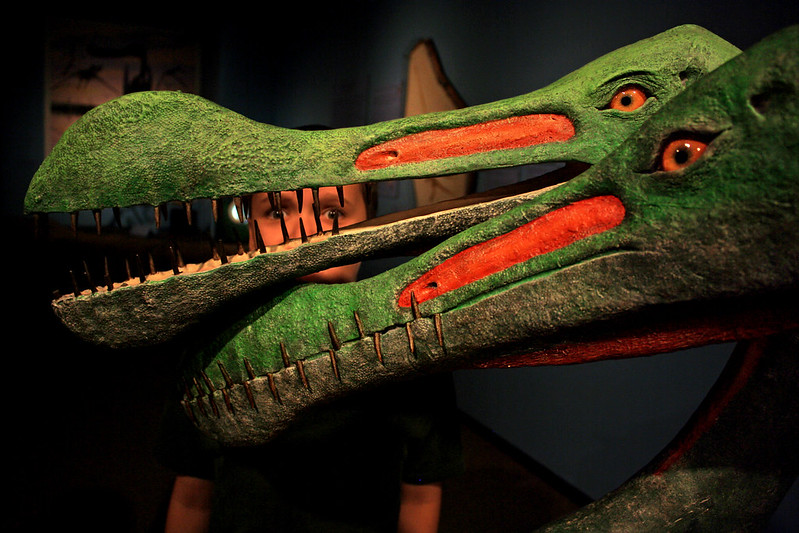 |
| Ornithocheirus mesembrinus, a particularly toothy pterosaur. |
 |
| Jail is fun! (Disclaimer: Do not use the exhibit to teach your children that jail is fun.) |
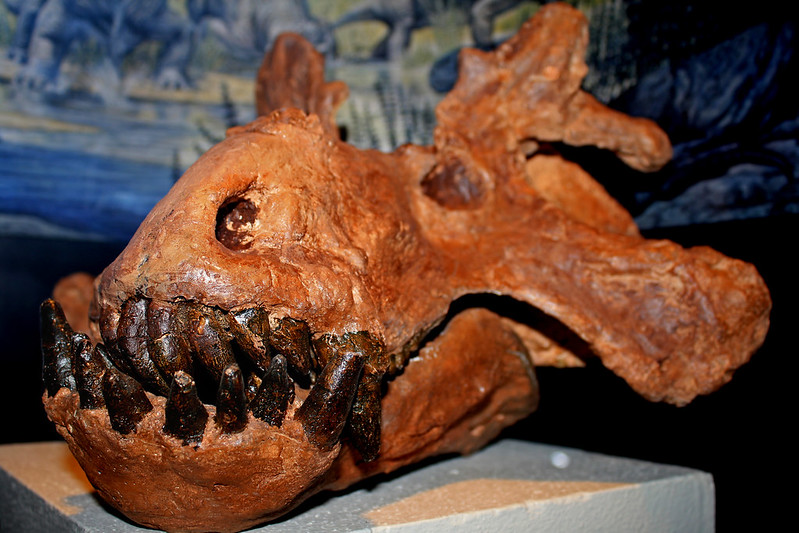 |
| The skull of an Estemmenosuchus, also known as a crowned crocodile, also known as the coolest animal that I didn't know existed until visiting this museum. |
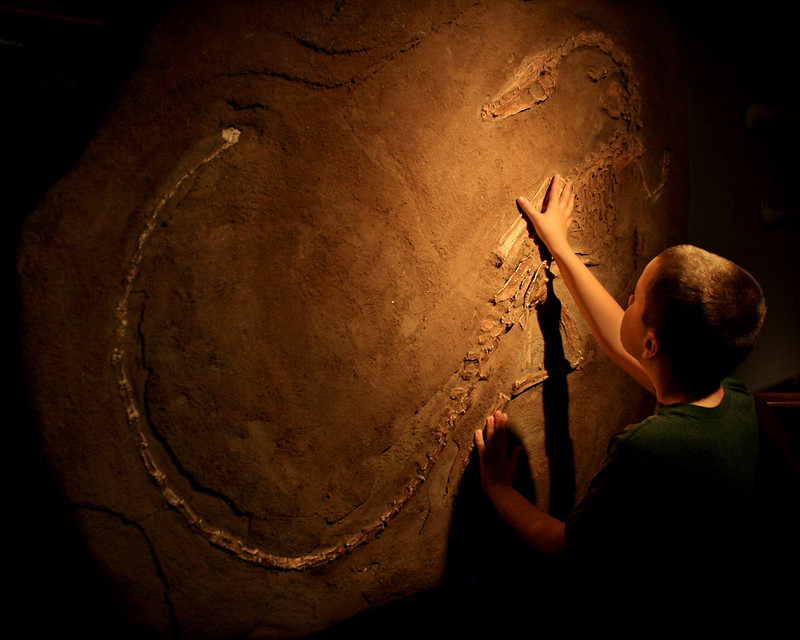 |
| A paleontologist is born. Examining a Coelophysis fossil. |
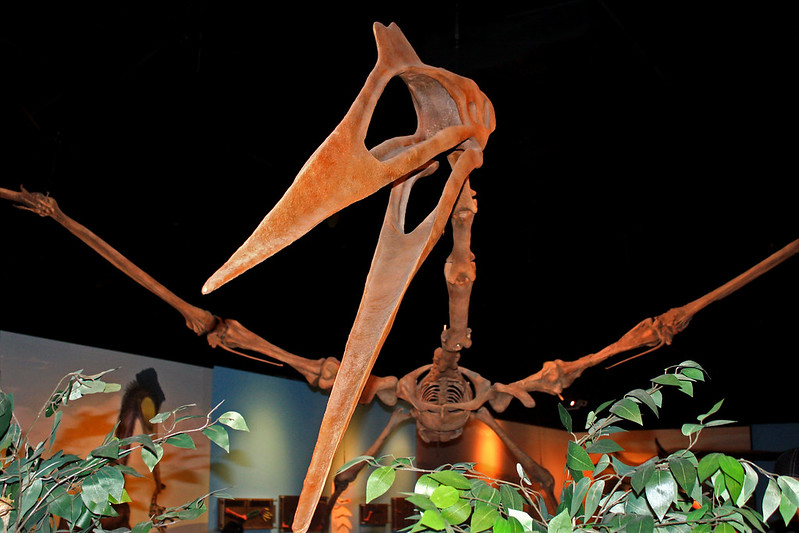 |
| Quetzalcoatlus northropi in yo face. |
|
|
|
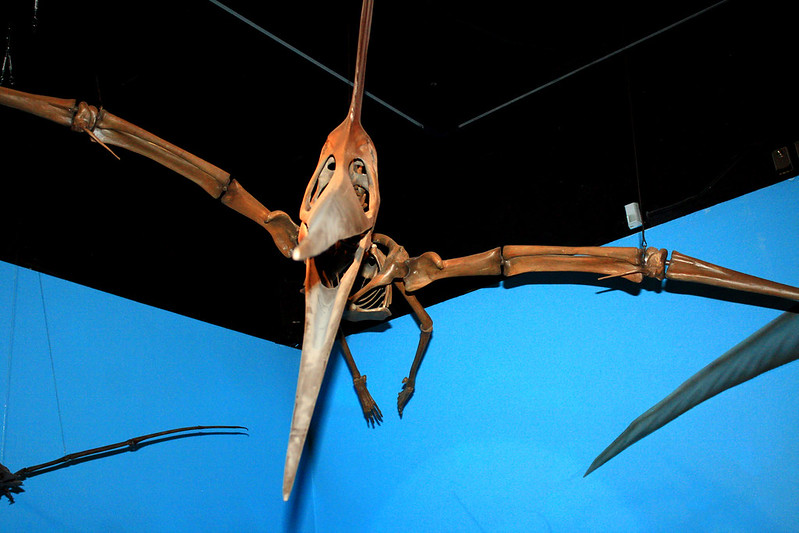 |
| Pteranodon sternbergi also all up in yo face. |
 |
| The chase continues. I think-he-saurus. |
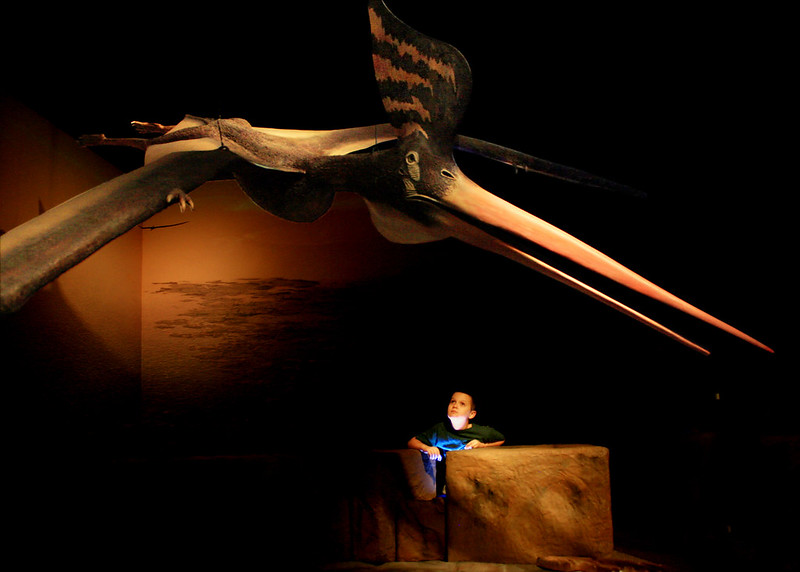 |
| The pterosaur gazing continues. |
|
 |
| Touching a real fossil! A giant one! |
 |
| The creepy-cool Jeholopterus ninchengensis, a very small pterosaur. |
|
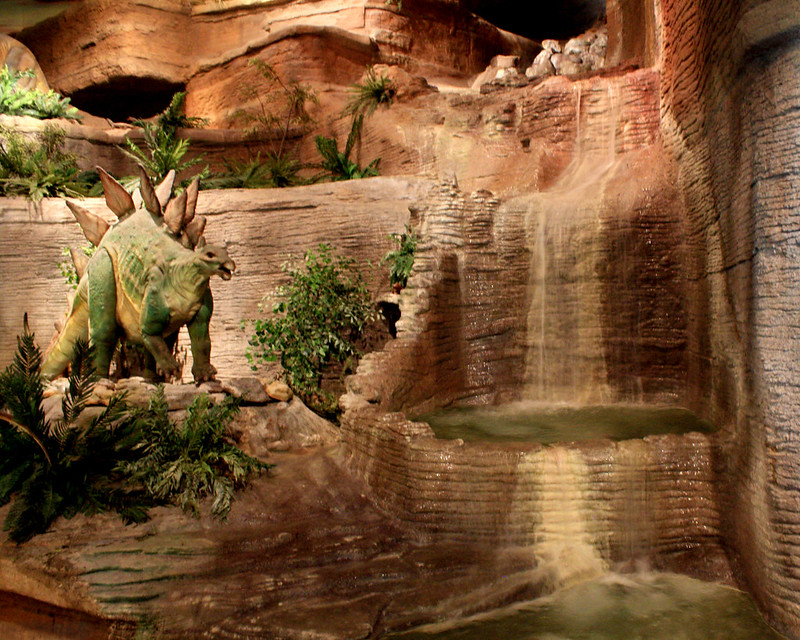 |
| Dinosaur mountain, complete with waterfalls, periodic thunderstorms, and animatronic dinosaurs. |
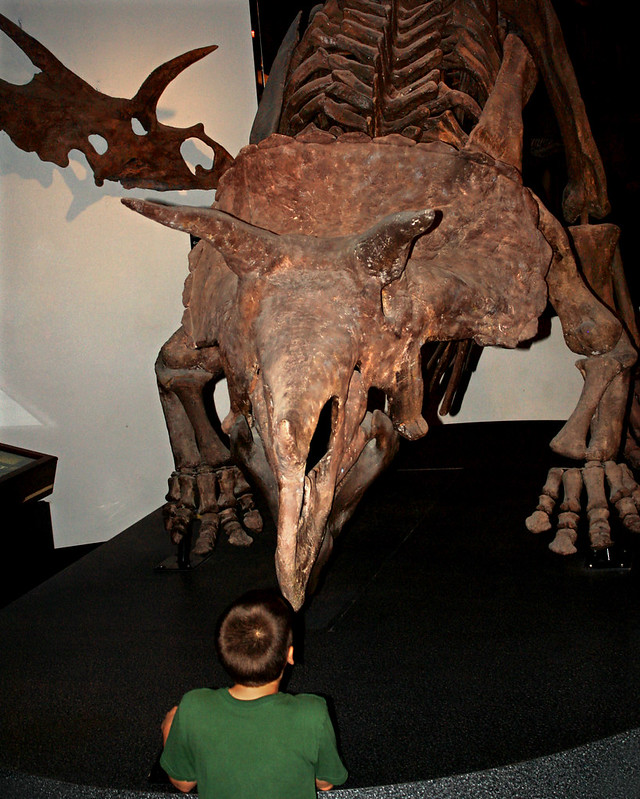 |
| Triceratops again. |
 |
| Even in Arizona, we don't grow them this big (anymore). |
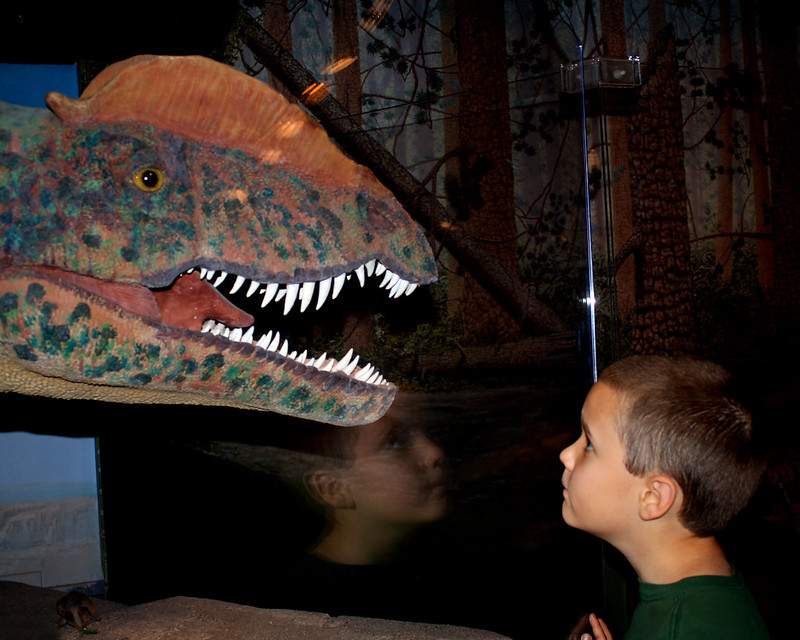 |
| Dilophosaurus, with fossil evidence gathered from Arizona's Kayenta Formation |
 |
| Quetzalcoatlus from the back. Tell me this isn't the coolest creature ever. |
 |
| My kid shares a moment with Tyrannosaurus bataar, a close relative of T. rex. Rawr. |
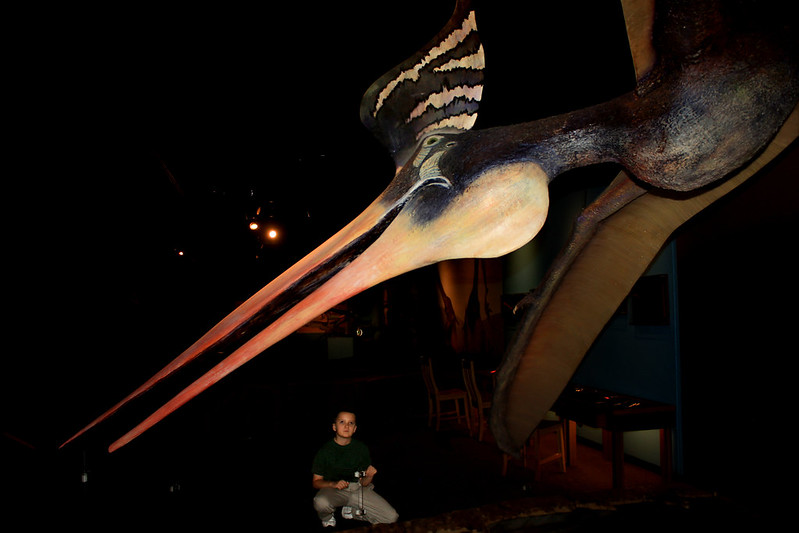 |
| And yet another pteranodon, because I truly can't help myself |
The Arizona Museum of Natural History is one block north of Main Street in downtown Mesa. For more information, call (480) 644-2230 or visit azmnh.org.




























